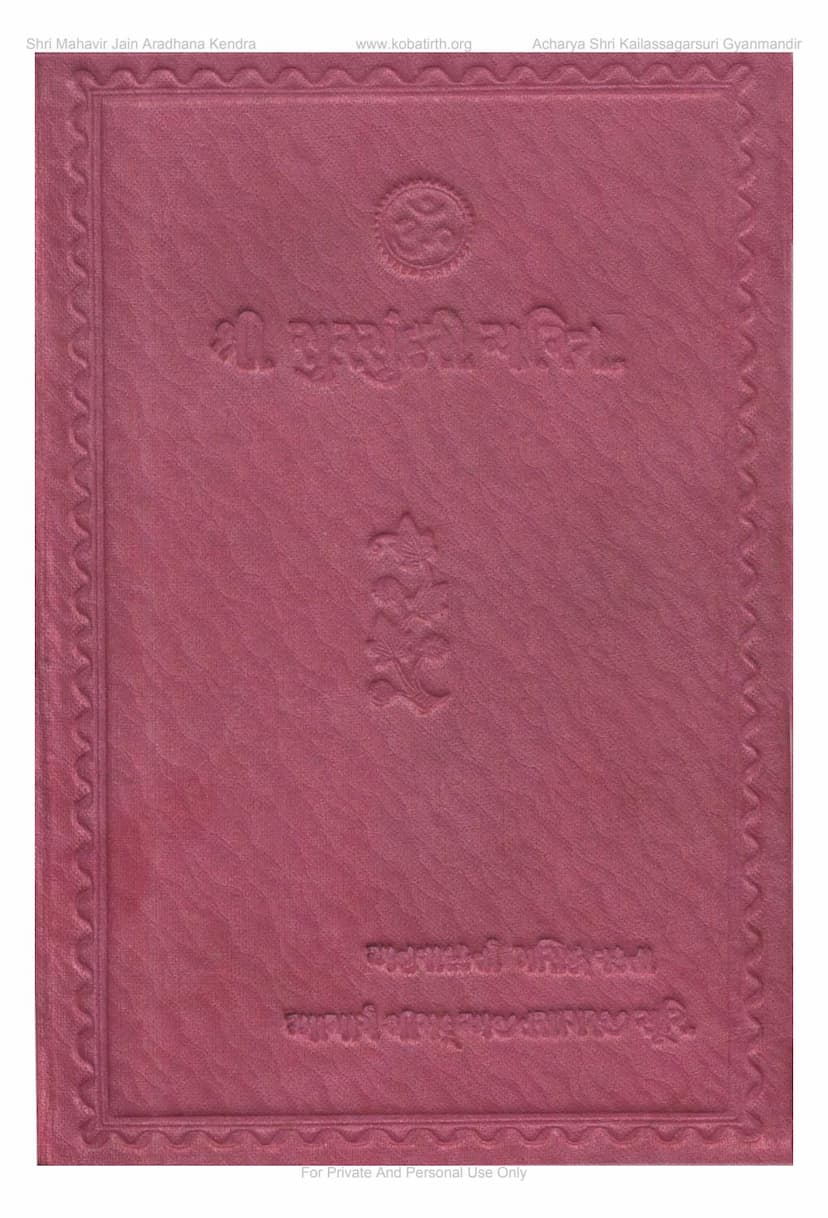Sursundari Charitam
Added to library: September 2, 2025

Summary
Certainly, here's a comprehensive summary of the Jain text "Sursundari Charitam" by Dhaneshwarmuni, based on the provided pages:
Book Title: Sursundari Charitam Author: Dhaneshwarmuni Publisher: Ajitsagarsuri Shastra Sangraha
Overview:
The provided text is a Gujarati translation and commentary of the "Sursundari Charitam," originally composed by Dhaneshwarmuni. The translation and publication were facilitated by Acharya Shri Ajitsagarsuri, with financial assistance from Seth Amritlal Kalidas of Rajnagar, in commemoration of his deceased wife, Paperbai. The book was published in Vikram Samvat 1981 (1925 CE) and Veer Samvat 2451.
Content Summary:
The text begins with traditional Jain invocations and dedications, expressing reverence to Guru Dev and Lord Mahavir. It then delves into philosophical discussions, particularly on the nature of knowledge and the means of acquiring it (pramanas) according to various schools of thought, especially the Nyaya school.
Key Philosophical Concepts Discussed:
- Pramanas (Means of Knowledge): The text elaborates on the four types of pramanas:
- Pratyaksha (Perception): Direct knowledge gained through the senses, such as experiencing sweetness, heat, color, etc.
- Anumana (Inference): Knowledge derived from inferring a cause from an effect, like inferring fire from smoke.
- Upamana (Comparison): Knowledge gained by comparing an unknown object with a known one, like identifying a "gavaya" (a type of wild ox) by its similarity to a cow.
- Shabda (Testimony): Knowledge obtained from reliable verbal testimony, such as the teachings of spiritual guides or scriptures.
- Atma (Soul): The text discusses the soul as being beyond the perception of the five senses, being without beginning or end, and possessing infinite potential. It explains that the soul experiences worldly pleasures and pains due to its bondage with the physical body and karmic influences.
- Karma and Reincarnation: The soul's journey through the cycle of birth and death (samsara) is described, influenced by the accumulation of punya (merit) and papa (demerit) through actions driven by attachment (raga) and aversion (dvesha). The text outlines the consequences of good or bad karma leading to births in different realms (deva, manushya, tiryancha, naraka).
- Path to Liberation (Moksha): The ultimate goal is described as liberation from the cycle of suffering. This is achieved by shedding ignorance, cultivating knowledge, and following a pure life. The text emphasizes the importance of abandoning pride and attachment, controlling desires, and transcending dualities like pleasure and pain.
- Ethical Conduct: The text implicitly stresses the importance of virtuous conduct, as indicated by the discussion on the negative consequences of vices like attachment, anger, ego, greed, fear, crookedness, and falsehood, which lead to karmic bondage.
Narrative Elements (Implied by the title and context):
While the provided pages focus heavily on philosophical exposition, the title "Sursundari Charitam" suggests a narrative about a character named Sursundari. The philosophical discussions likely serve as a framework or context for the story, possibly illustrating Jain principles through the life and experiences of Sursundari. The detailed table of contents at the end (pages 82-90) reveals a vast narrative with numerous characters, events, and settings, suggesting a complex and elaborate story encompassing various moral and spiritual themes.
Key Themes and Messages:
- The Nature of Reality: Understanding the true nature of reality through proper knowledge and perception.
- The Law of Karma: The inescapable consequences of actions and their impact on the soul's journey.
- The Importance of Renunciation and Detachment: Overcoming desires and attachments to achieve spiritual liberation.
- Ethical Living: The necessity of practicing virtues and abstaining from vices to lead a righteous life.
- Spiritual Guidance: The role of enlightened beings (Tirthankaras, Acharyas, Munis) in guiding souls towards liberation.
- The Pursuit of Knowledge: The emphasis on acquiring true knowledge for spiritual upliftment.
Overall Impression:
The "Sursundari Charitam," as presented in these pages, appears to be a profound Jain text that blends philosophical teachings with a narrative framework. It aims to educate readers about core Jain tenets, the workings of karma, and the path to spiritual liberation, likely through the engaging story of Sursundari. The detailed table of contents further indicates a rich and multifaceted narrative exploring themes of virtue, vice, fate, and spiritual aspiration within the Jain tradition.